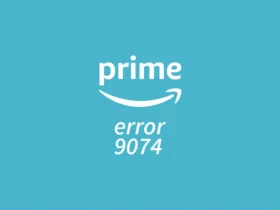Selling clothing on Amazon is a popular way for businesses to reach a wider audience and increase their sales. With millions of customers visiting Amazon every day, it’s no wonder why so many sellers turn to this platform to sell their products. However, selling clothing on Amazon comes with its own set of challenges, such as optimizing product listings, managing fulfillment and shipping, and advertising effectively.
To be successful in selling clothing on Amazon, it’s important to understand the platform’s requirements and best practices for product listing and optimization. This includes creating high-quality product images, writing compelling product descriptions, and using relevant keywords to improve search visibility. Additionally, sellers must be aware of Amazon’s fees and margins, as well as their own profit margins, to ensure they are pricing their products competitively while still making a profit.
Another important aspect of selling clothing on Amazon is providing excellent customer service and creating a positive customer experience. This includes responding to customer inquiries and feedback in a timely and professional manner, as well as ensuring that products are shipped and delivered on time and in good condition.
Key Takeaways
- Selling clothing on Amazon requires optimizing product listings, managing fulfillment and shipping, and advertising effectively.
- Understanding Amazon’s fees and margins is crucial for pricing products competitively while still making a profit.
- Providing excellent customer service and creating a positive customer experience is key to success on Amazon.
Selling Clothing on Amazon
Selling clothing on Amazon can be a profitable venture for clothing retailers and fashion industry professionals alike. However, it comes with its own set of benefits and challenges. Here’s what you need to know to sell clothing on Amazon.
Benefits of Selling Clothing on Amazon
Amazon is one of the largest online marketplaces in the world, with millions of customers browsing its pages every day. By selling clothing on Amazon, you can tap into this vast customer base and reach a wider audience than you might be able to with a standalone online store.
Amazon also offers a range of tools and services to help clothing sellers optimize their listings and increase their sales. For example, Amazon’s FBA (Fulfillment by Amazon) program allows sellers to store their inventory in Amazon’s warehouses and have Amazon handle shipping and customer service. This can save sellers time and money, as well as improve their overall customer experience.
Challenges of Selling Clothing on Amazon
While there are many benefits to selling clothing on Amazon, there are also some challenges to be aware of. One of the biggest challenges is competition. With so many sellers vying for customers’ attention, it can be difficult to stand out and make sales.
Another challenge is ensuring that your clothing listings are accurate and detailed. Amazon has strict guidelines for clothing sellers, and failing to meet these guidelines can result in your listings being removed or your account being suspended.
How to Sell Clothing on Amazon
To sell clothing on Amazon, you’ll need to create an Amazon seller account and list your products. Here are some tips for optimizing your listings and increasing your sales:
- Use high-quality photos that show your clothing from multiple angles
- Write detailed and accurate product descriptions that include information about sizing, materials, and care instructions
- Offer competitive pricing and consider using Amazon’s pricing tools to help you set your prices
- Utilize Amazon’s advertising tools, such as Sponsored Products and Sponsored Brands, to increase visibility for your listings
In conclusion, selling clothing on Amazon can be a lucrative venture for clothing retailers and fashion industry professionals. However, it’s important to be aware of the challenges and take steps to optimize your listings and increase your sales.
Product Listing and Optimization
When it comes to selling clothing on Amazon, product listing and optimization are critical for success. Here are some key sub-sections to consider when optimizing your product listings:
Optimizing Your Product Listings
To optimize your product listings, you need to ensure that your listings are complete, accurate, and appealing to potential customers. This means including all relevant product information, such as color, size, and images, and making sure that your titles and descriptions accurately reflect the product you are selling.
Product Images and Descriptions
Product images and descriptions are essential for attracting customers and convincing them to buy your products. You should use high-quality images that show your products in the best possible light, and provide detailed descriptions that highlight the key features and benefits of your products.
Titles and Descriptions
Your product titles and descriptions should be clear, concise, and optimized for search engines. This means using relevant keywords and phrases that customers are likely to search for when looking for products like yours.
Variations and Variants
If you offer variations or variants of your products, such as different colors or sizes, you should create separate listings for each option. This will make it easier for customers to find and purchase the exact product they are looking for.
High-Volume Keywords
Using high-volume keywords in your product listings can help you rank higher in Amazon search results and attract more customers. You should research the most popular keywords and phrases in your niche and incorporate them into your listings.
Brand Registry
Enrolling in Amazon’s Brand Registry program can help you protect your brand and improve your visibility on the platform. This program gives you access to a range of tools and features that can help you manage and optimize your product listings.
A+ Content
A+ Content is a premium feature that allows you to create enhanced product listings with additional images, videos, and text. This can help you stand out from the competition and provide customers with more information about your products.
Trademark and Descriptive Terms
When creating your product listings, you should be careful to avoid using trademarked or descriptive terms that could infringe on the rights of others. This includes using brand names or logos that you do not have permission to use.
In summary, optimizing your product listings is essential for selling clothing on Amazon. By following these best practices and using the right tools and features, you can improve your visibility, attract more customers, and increase your sales.
Fulfillment and Shipping
Fulfillment by Amazon (FBA)
Fulfillment by Amazon (FBA) is a service offered by Amazon that allows sellers to store their products in Amazon’s fulfillment centers. Amazon takes care of the picking, packing, and shipping of the products to customers. This service is highly recommended for sellers who want to focus on growing their business and not worry about the logistics of shipping and storage.
Benefits of using FBA include Prime eligibility, easy returns, and access to Amazon’s world-class customer service. Additionally, FBA sellers have access to Amazon’s global fulfillment network, which allows them to reach customers in different countries.
Fulfillment by Merchant (FBM)
Fulfillment by Merchant (FBM) is a service where sellers handle the picking, packing, and shipping of their products to customers. This service is recommended for sellers who have their own storage facilities and are able to handle the logistics of shipping and storage themselves.
Benefits of using FBM include more control over the fulfillment process, lower fees, and the ability to offer unique packaging and branding options to customers.
Inventory Management
Inventory management is crucial for sellers who want to ensure that they have enough stock to fulfill customer orders. Amazon provides tools for sellers to manage their inventory levels and receive alerts when stock is running low.
Sellers can also use third-party software to manage their inventory levels and automate the ordering process.
Order Fulfillment
Order fulfillment is the process of receiving, processing, and delivering customer orders. Amazon provides tools for sellers to manage their orders and track the status of each order.
Storage and Returns
Amazon’s fulfillment centers provide secure storage for sellers’ products. Additionally, Amazon provides tools for sellers to manage returns and refunds.
Shipping and Logistics
Amazon provides shipping and logistics services for sellers who use FBA. This includes discounted shipping rates and access to Amazon’s global fulfillment network. For sellers who use FBM, Amazon provides tools for them to manage their own shipping and logistics.
In conclusion, sellers have the option to use either FBA or FBM for their fulfillment needs. Inventory management, order fulfillment, storage and returns, and shipping and logistics are important aspects of selling clothing on Amazon.
Advertising and Marketing
Sponsored Brands
One of the most effective ways to advertise clothing on Amazon is through sponsored brands. Sponsored brands are keyword-targeted ads that appear at the top of the search results page and feature your brand logo, a custom headline, and up to three products. These ads can drive traffic to your brand page or a specific product page, increasing visibility and ultimately sales.
Sponsored Display
Sponsored display ads are another option for advertising clothing on Amazon. These ads are displayed to customers who are browsing related products or categories and can appear on product detail pages, customer review pages, and in Amazon search results. Sponsored display ads can help increase visibility and drive sales for specific products.
Advertising Costs
It’s important to understand the costs associated with advertising on Amazon. Amazon charges for sponsored brand and sponsored display ads on a cost-per-click (CPC) basis, meaning you only pay when someone clicks on your ad. The cost per click varies depending on the competition for the keywords you’re targeting and the ad placement.
Product Reviews
Product reviews can also be a valuable tool for marketing clothing on Amazon. Positive reviews can increase the visibility and credibility of your products, leading to increased sales. Encouraging customers to leave reviews and responding to both positive and negative feedback can help build customer trust and loyalty.
Social Media
Social media can also be a powerful tool for promoting clothing on Amazon. Utilizing platforms like Instagram and Facebook to showcase your products and drive traffic to your Amazon store can increase visibility and ultimately sales.
Promotions
Finally, offering promotions such as discounts or free shipping can be an effective way to attract customers and increase sales. Amazon offers several promotion options, including lightning deals, coupons, and buy one get one free promotions. These promotions can be a great way to generate buzz and increase sales for specific products.
Fees and Margins
Fees and Costs
When selling clothing on Amazon, there are a number of fees and costs to consider. These include:
- Referral fees: Amazon charges a referral fee based on the category of the item being sold. For clothing, the referral fee is typically around 15%.
- Fulfillment fees: If you use Amazon’s fulfillment service, you will also be charged a fee for storage and shipping.
- Monthly subscription fees: If you plan to sell more than 40 items per month, you will need to sign up for a professional selling plan, which costs $39.99 per month.
- Other fees: Amazon may also charge additional fees for things like returns, advertising, and other services.
Profit Margin
To calculate your profit margin, you will need to subtract your costs from your selling price. When setting your prices, it’s important to consider not only your costs but also the competition and the market demand. Keep in mind that Amazon’s fees will also affect your profit margin.
Investment and Credit Card
Selling on Amazon requires some upfront investment, including the cost of inventory, packaging, and shipping supplies. You may also need to invest in marketing and advertising to increase your visibility and sales. It’s important to keep track of your expenses and revenue to ensure that you are making a profit. Additionally, you will need a credit card to pay for Amazon’s fees and other expenses.
Tax Information
As a seller on Amazon, you are responsible for collecting and remitting sales tax. The specific requirements vary by state and can be complex, so it’s important to consult with a tax professional or use a tax software to ensure compliance. Amazon also provides tools to help sellers manage their tax obligations.
In summary, selling clothing on Amazon can be a profitable venture, but it’s important to consider the fees and costs, profit margins, investment and credit card requirements, and tax obligations. By carefully managing these factors, you can increase your chances of success on the platform.
Customer Service and Experience
Customer Service
When it comes to selling clothing on Amazon, providing excellent customer service is crucial. Customers expect prompt and helpful responses to their inquiries and concerns. Amazon has strict guidelines for sellers to ensure that they provide top-notch customer service. These guidelines include responding to customer messages within 24 hours, providing accurate and detailed product information, and resolving any issues quickly and efficiently.
As a seller, it’s important to be proactive in addressing customer needs and concerns. This can include providing detailed sizing information, offering free returns, and responding to negative reviews in a professional and helpful manner.
Customer Reviews
Customer reviews are a critical component of selling clothing on Amazon. Positive reviews can help boost sales and improve your product’s visibility, while negative reviews can have the opposite effect. As a seller, it’s important to encourage customers to leave reviews and respond to any feedback you receive.
It’s also important to monitor your product’s reviews regularly and address any negative feedback. This can include addressing issues with the product or offering a refund or replacement to dissatisfied customers.
Product Detail Page
Your product detail page is where customers will go to learn more about your clothing items. It’s important to provide detailed and accurate information, including sizing charts, fabric information, and care instructions.
Make sure your product images are high-quality and showcase your clothing items in the best possible light. Consider including lifestyle images that show how your clothing items can be styled and worn.
Returns and Refunds
Offering hassle-free returns and refunds can help improve the customer experience and boost sales. Amazon has specific guidelines for returns and refunds, including offering free returns for products that are not as described or that arrive damaged.
Make sure your return policy is clear and easy to understand. Consider offering free returns or exchanges to customers to make the process as seamless as possible.
In conclusion, providing excellent customer service and a positive customer experience is crucial when selling clothing on Amazon. By following Amazon’s guidelines and addressing customer needs and concerns, you can build a loyal customer base and improve your sales.
Conclusion
Selling clothing on Amazon can be a lucrative business for those who are willing to put in the time and effort. By following the tips and strategies outlined in this article, you can increase your chances of success and grow your business on the platform.
One of the most important things to keep in mind when selling clothing on Amazon is to do your research. This includes researching your competitors, analyzing customer reviews, and staying up-to-date on the latest fashion trends.
Another key factor in your success is creating high-quality product listings. This means using high-quality images, providing detailed product descriptions, and using keywords that will help your products show up in search results.
It’s also important to focus on customer service. Responding promptly to customer inquiries and addressing any issues that arise can help build trust and loyalty with your customers.
Finally, it’s important to be patient and persistent. Building a successful clothing business on Amazon takes time and effort, but with the right strategies and mindset, it can be a rewarding and profitable venture.
Overall, selling clothing on Amazon can be a great way to reach a large audience and grow your business. By following the tips and strategies outlined in this article, you can increase your chances of success and achieve your goals on the platform.
Frequently Asked Questions
What are the best clothing brands to sell on Amazon?
The best clothing brands to sell on Amazon are those that are in high demand and have a good reputation. Some of the popular clothing brands on Amazon include Nike, Adidas, Levi’s, and Calvin Klein. However, it is important to do your research and find out which brands are currently trending and have a good track record of sales.
Can I sell used clothes on Amazon?
Yes, you can sell used clothes on Amazon. However, there are certain conditions that must be met. The items must be in good condition, accurately described, and not listed in certain prohibited categories. It is also important to note that used clothing items may not sell as well as new items, so it is important to price them accordingly.
How much money can I make selling clothes on Amazon?
The amount of money you can make selling clothes on Amazon varies depending on several factors, including the type of clothing you are selling, the brand, the condition, and the competition. Some sellers make a few hundred dollars a month, while others make thousands of dollars a month. It is important to do your research and find out what the market demand is for the items you are selling.
Is it worth selling clothes on Amazon?
Yes, selling clothes on Amazon can be worth it if you do your research and find the right niche. However, it is important to note that there is a lot of competition in the clothing market on Amazon, so it may take some time and effort to establish a profitable business.
Can I sell boutique items on Amazon?
Yes, you can sell boutique items on Amazon. However, there are certain requirements that must be met, including having a professional seller account and meeting certain performance metrics. It is also important to note that boutique items may face more competition on Amazon, so it is important to differentiate your products and provide excellent customer service.
Can I sell brand name clothing on Amazon?
Yes, you can sell brand name clothing on Amazon. However, it is important to ensure that you are authorized to sell the brand and that you are not selling counterfeit items. Amazon has strict policies in place to prevent the sale of counterfeit goods, and violating these policies can result in account suspension or termination.













